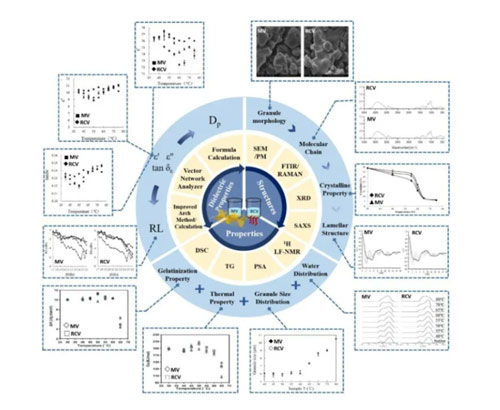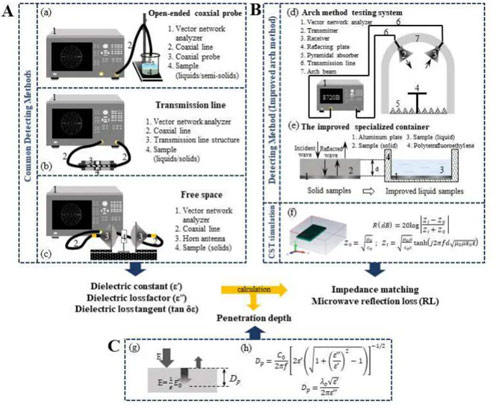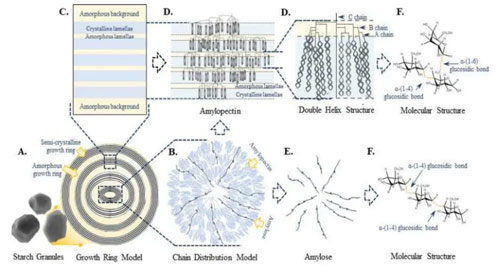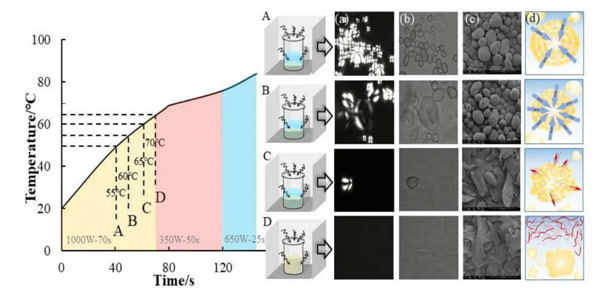Введение
The dielectric properties, wave absorbing properties and related electromagnetic indicators of different starchy materials are reviewed. The possible structural changes of starch in the microwave field (apparent morphology, sheet structure, crystallization, и т. д.) are analyzed step by step from macro to micro. Structure, molecular chain structure, и т. д.), trying to explain the starch’s structural changes under microwave field based on the electromagnetic properties of starch system, and provide a scientific basis for the use of microwave processing to obtain high-performance starch foods.
Фон
Starch is a universal and natural polymer material and is widely used in food, paper, textile and other industries ЯМР во временной области. As we all know, starch is divided into amylose and amylopectin because of its different structure. Because of the different molecular structures of the two, their properties are very different. Поэтому, in the modern food industry, various processing methods are often used to modify starch. Среди них, microwave treatment is one of the most commonly used methods.
Microwave radiation is an important physical method to change the structure and properties of starch (its electromagnetic wave frequency is about 915 MHz-2450 MHz). Microwave modification involves a complex mechanism of action between microwave radiation and the sample, and the moisture content of the sample. A large number of studies on the effects of microwave radiation on the modification of various plant-derived starches have shown that microwaves can cause rearrangement of molecular structure and change starch’s water absorption, solubility, and swelling properties. Regarding the changes of starch structure after microwave treatment, commonly used research methods such as LF-NMR, C13 and other research methods (см. рисунок 1).

Why study the change of starch from the perspective of dielectric properties?

Although many researchers have attempted to elucidate structural changes from the perspective of microwave input energy (microwave power and time) и / or the starch system itself (in most cases water content), interpreting these changes from the perspective of the starch system itself cannot grasp The Nature of Microwave and Starch System Interactions.
Однако, dielectric properties are a comprehensive indicator that can reflect many properties of starch. More importantly, through the real-time monitoring of the dielectric properties of the starch system, the subsequent response of the starch system during microwave processing can be predicted, which helps explain the possible changes in starch during the subsequent microwave heating process.
Dielectric property is an important index for evaluating the ability of food to absorb microwave electromagnetic energy and convert it into heat energy, which determines the penetration depth of microwave in starch. Microwave action itself can change the dielectric properties of the system, thereby further regulating the response of the starch composite system in the late stage of microwave action.
Changes of Dielectric-Related Starch Structure under Microwave Treatment

Starch is a kind of biological macromolecule composed of α-glucan, mainly composed of amylose and amylopectin, these two parts constitute the semi-crystalline structure of starch. The amorphous region is mainly composed of amylose, and the crystalline region is mainly composed of microcrystalline bundles formed by amylopectin double helix structure.
Dielectric properties, output power, microwave cavity size, and related properties all affect the structural response of starch systems under microwave fields. The raw starch has low dielectric properties and the direct influence of microwave on it is weak. Однако, the introduction of high-power, long-term strong microwave treatment will cause the raw starch to locally overheat and carbonize, resulting in the generation of free radicals and molecular chain breaks. The dielectric properties of starch composite systems are affected by a variety of factors, such as starch type, moisture content, ion content, и температура. Поэтому, the starch in the system will be mediated by the above factors, indirectly triggering changes in structure and properties.

 заплесневелый
заплесневелый